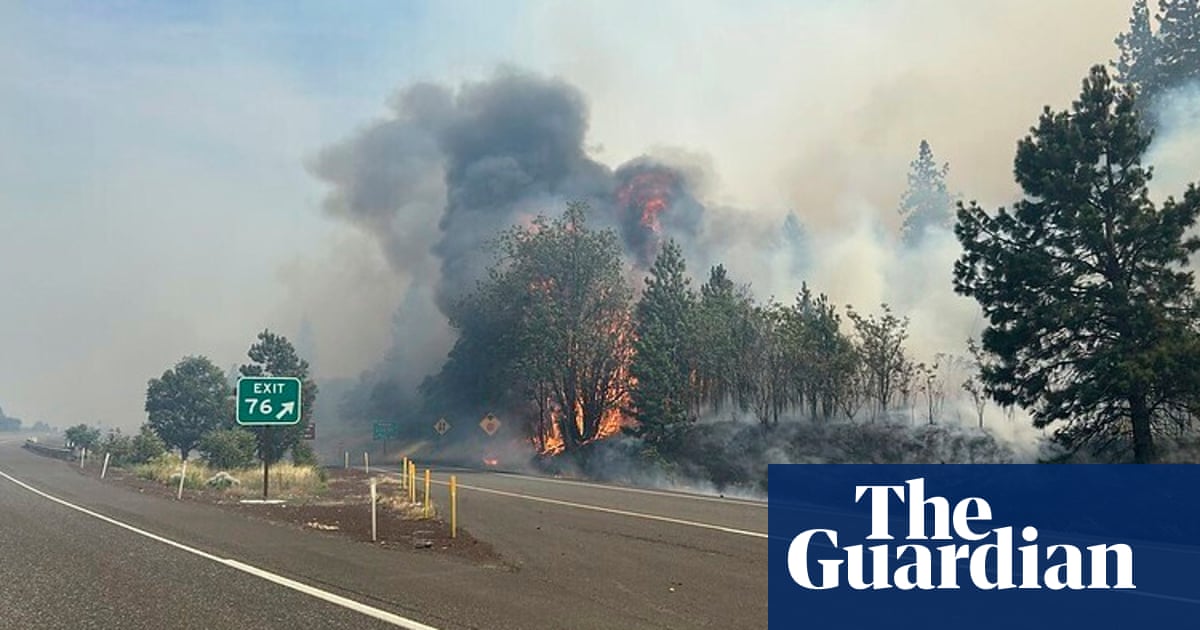A growing wildfire inOregonhas destroyed multiple homes and prompted evacuation orders in the Columbia River Gorge area, in what officials are calling an early warning of the fire season ahead.
The so-called Rowena firehad grownon Thursday to 3,500 acres and remained 0% contained, prompting officials to issue evacuation orders for hundreds of homes and to temporarily close a section of an interstate highway.
The state’s governor, Tina Kotek, invoked the Emergency Conflagration Act for the Rowena Fire, allowing the state fire marshal agency to mobilize resources, it said in a statement.
The agency said it was mobilizing an incident management team and six structural taskforces, with three responding on Wednesday night and the other three arriving early on Thursday. The fire has alreadydestroyedabout 20 homes, according to local news reports, and is threatening nearly 2,200 structures.
The wildfire comes as the US west readiest for what could be a brutal fire season exacerbated by a dry winter and warming temperatures. Parts of Oregon are already dealing with record-breaking earlyseason heat.
“This early season conflagration should come as a reminder to Oregonians to be ready for wildfire,” said Mariana Ruiz-Temple, the state fire marshal.
The Oregon department of transportation said on Wednesday Interstate 84 was closed between Hood River and The Dalles, though the highway wasreportedlyreopened by Thursday. Hood River, a popular tourist destination about 55 miles (90km) east of Portland, is home to about 8,000 people, and more than 15,000 people live in The Dalles farther east.
Residents of more than 700 homes were ordered to evacuate in an area stretching north-west of The Dalles along I-84 and farther inland, according to the Wasco county sheriff’s office. Residents of more than 1,300 homes were told to prepare to leave, including in part of the town’s northern end.
A middle school in The Dalles was set up as a temporary shelter, while the county fairgrounds opened as a shelter for livestock and horses, the sheriff’s office said.
Photos shared by the transportation department showed flames burning alongside and in the median of I-84 as wind gusts fanned the smoke. A water helicopter and a plane dropping fire retardant helped fight the fire, which broke out on Wednesday.
